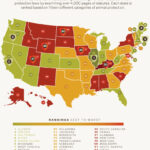Animal cruelty remains a disheartening reality in our society, one that galvanizes dedicated efforts to protect the most vulnerable among us. The Society for the Prevention of Cruelty to Animals (SPCA) is at the forefront of this battle, serving as both an advocate and an enforcer against animal abuse. This article aims to unravel the complex and multifaceted role the SPCA plays in enforcing animal welfare laws, including their ability to file charges against offenders.
At the heart of the SPCA’s mission is a deep commitment to ensure the humane treatment of all animals. Founded on the principle that every creature deserves compassion and respect, this organization strives to eradicate animal suffering through advocacy, education, and, when necessary, legal action. However, the question often arises: can the SPCA directly file animal cruelty charges? To answer this, it is essential to understand the intricate legal landscape regarding animal rights and how the SPCA fits into it.
The SPCA operates within a framework of local, state, and national laws that govern animal welfare. In many jurisdictions, the SPCA is empowered to act as an enforcement agency, equipped with the authority to investigate allegations of cruelty. Their agents, often referred to as humane officers, are typically trained in animal law and carry the responsibility of identifying neglect or abuse. From the moment a report of cruelty is received, the SPCA springs into action, conducting thorough investigations that may include visits to the animal’s environment, interviews with witnesses, and collaborative efforts with local law enforcement.
Understanding the SPCA’s authority to file charges necessitates a closer examination of the legalities involved. While humane officers can gather evidence and present cases of suspected abuse to the authorities, the power to formally charge an individual rests with local law enforcement and the judicial system. This delineation is crucial; it underscores the SPCA’s role as a crucial facilitator in the prosecution of animal cruelty rather than as a primary enforcer. Thus, while they cannot independently file charges, they play an instrumental role in pursuing justice for animals.
The relationship between the SPCA and law enforcement agencies often hinges on collaboration. When allegations of animal cruelty come to light, the SPCA collaborates with police to apply legal statutes effectively. In many areas, these local laws stipulate various forms of abuse, including neglect, physical harm, and psychological distress inflicted on animals. The SPCA’s thorough documentation of abuse cases—complete with photographic evidence and witness statements—often plays a pivotal role in motivating law enforcement to take necessary action.
This collaborative approach brings to light another layer of complexity: the public’s perception of animal welfare laws and their enforcement. Many individuals are under the impression that the SPCA has overarching authority akin to a police force, which can lead to misunderstandings regarding what actions can be taken in cases of reported abuse. By educating the community about their actual capabilities and limitations, the SPCA promotes informed dialogue surrounding animal rights, fostering a culture that values empathy and proactive measures against cruelty.
A significant aspect of the SPCA’s preventive efforts includes educational initiatives aimed at engendering a deeper appreciation for animal welfare among the public. Through community outreach programs, workshops, and campaigns, the SPCA cultivates awareness about the signs of animal cruelty and the importance of reporting suspected abuse. Such awareness not only increases the likelihood of reporting but also empowers communities to take a stand against cruelty. This proactive approach is essential as it creates a societal expectation where animal welfare is prioritized.
Furthermore, the SPCA’s involvement extends beyond immediate rescue and prosecution efforts. They work tirelessly to advocate for stronger legislation that enhances penalties for offenders and closes loopholes that allow cruelty to persist. By lobbying for reforms at various levels of government, the SPCA helps shape a legal framework that supports the humane treatment of animals. This legislative advocacy is a crucial aspect of their role, functioning as both a deterrent against cruelty and an affirmation of society’s commitment to animal welfare.
Additionally, the SPCA emphasizes the importance of fostering compassionate relationships between humans and animals. By promoting responsible pet ownership and humane treatment practices, they aim to reduce the incidence of cruelty before it begins. This includes offering resources for spaying and neutering, behavioral training, and educational programs that highlight the responsibilities inherent in pet ownership. Such initiatives are also integral in addressing the deeply rooted societal issues that can lead to neglect or abuse, fundamentally influencing how individuals perceive and interact with animals in their care.
Critically, while the SPCA is an essential advocate and facilitator in the fight against animal cruelty, it is not without its challenges. Limited funding and resources can impede their outreach and enforcement efforts, forcing many organizations to navigate the delicate balance between rescue operations and educational initiatives. This reality underscores the necessity for community support and involvement; local citizens can play a pivotal role in amplifying the SPCA’s mission through volunteering, donations, or simply spreading awareness about animal rights.
The SPCA stands as a crucial ally in the ongoing battle against animal cruelty. While they may not have the unilateral power to file charges, their role as facilitators of justice and advocates for animal rights is irrefutable. Through their partnerships with law enforcement, legislative efforts, and community outreach programs, they are striving to build a society in which animals are treated with the dignity and compassion they rightfully deserve. Together, with community engagement and support, the dream of a cruelty-free world is not just a hope; it is an achievable reality.










